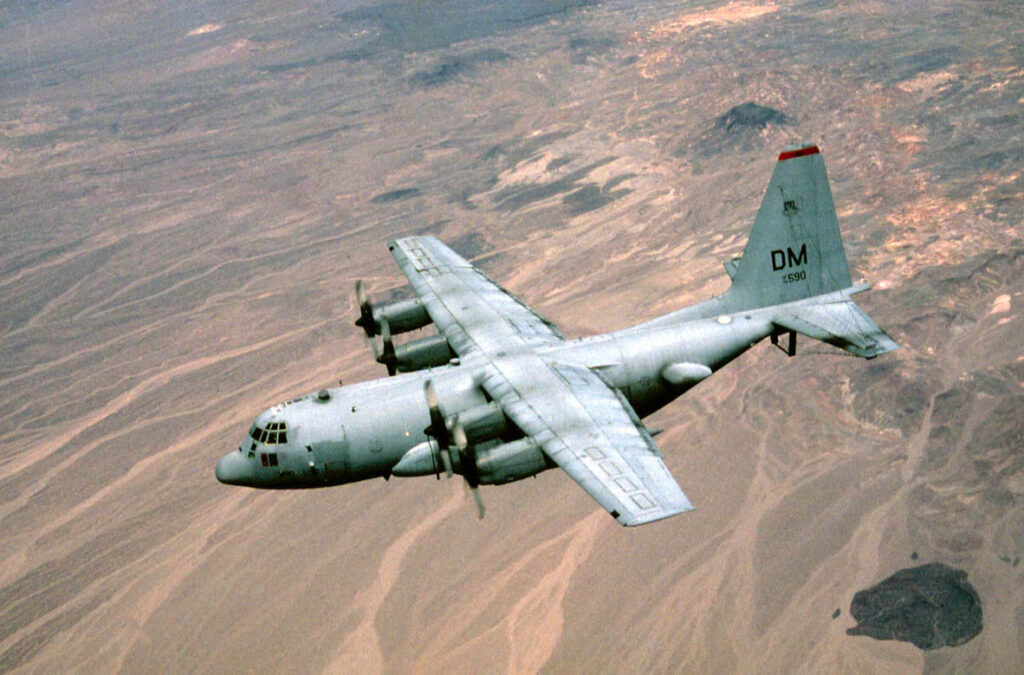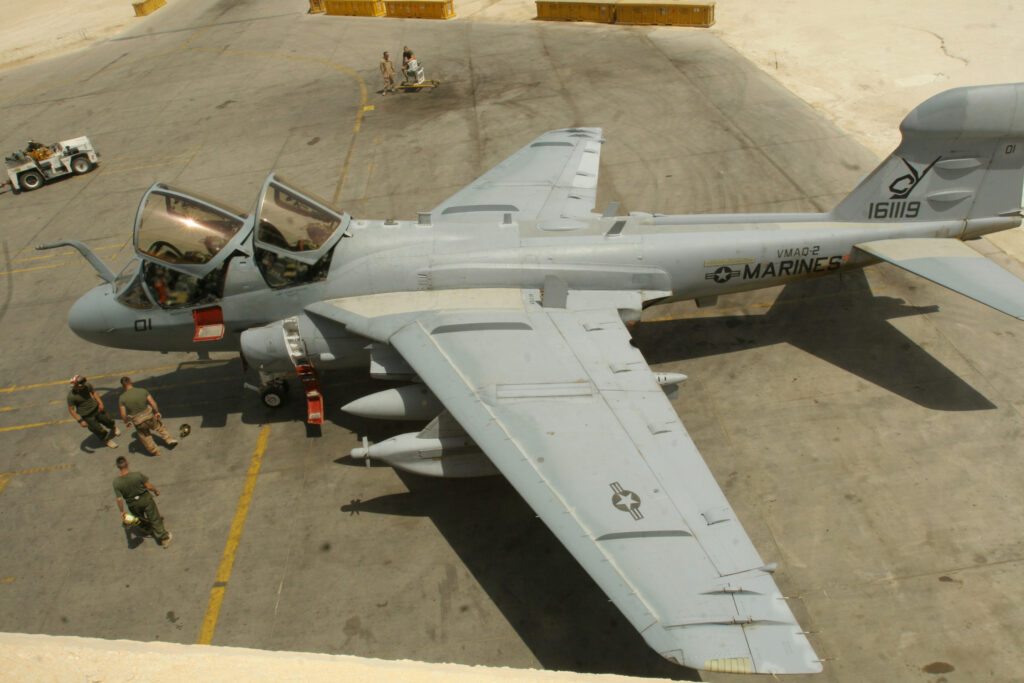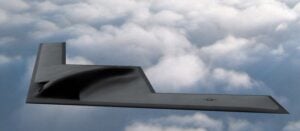By SYDNEY J. FREEDBERG JR.
 WASHINGTON: The US military is “not prepared” to conduct radio and radar jamming against high-end adversaries, a veteran electronic warfare officer now in Congress says. We have made major progress jamming terrorist communications in Afghanistan and Iraq, says Rep. Don Bacon, a retired one-star general who recently visited both countries. But even against such low-tech foes, he told me, we’re hampered by aging equipment — like the EC-130H Compass Call he flew — and outdated doctrine.
WASHINGTON: The US military is “not prepared” to conduct radio and radar jamming against high-end adversaries, a veteran electronic warfare officer now in Congress says. We have made major progress jamming terrorist communications in Afghanistan and Iraq, says Rep. Don Bacon, a retired one-star general who recently visited both countries. But even against such low-tech foes, he told me, we’re hampered by aging equipment — like the EC-130H Compass Call he flew — and outdated doctrine. “We are moderately prepared for the low-end fight like we’ve seen in Iraq and Afghanistan. That’s what we’ve been doing,” Bacon said. “But in a high-end fight, we are not prepared.”
“We are moderately prepared for the low-end fight like we’ve seen in Iraq and Afghanistan. That’s what we’ve been doing,” Bacon said. “But in a high-end fight, we are not prepared.”
The first half of Bacon’s assessment surprised me, and I said so: We’re only “moderately” prepared to jam terrorists and guerrillas, largely uneducated adversaries using off-the-shelf electronics, after 16 years of fighting them?
For one thing, it turns out we haven’t actually been doing much offensive electronic warfare for most of those 16 years. Back when Bacon flew over Iraq, the overwhelming focus was on just one mission: jamming radio-controlled roadside bombs (RCIEDS). Air Force Compass Calls – originally designed to jam enemy communications – and Navy and Marine Prowlers – designed to jam anti-aircraft radars – were urgently retasked to protect Humvees rolling down the road. The death toll from home-made landmines pushed all other electronic warfare missions aside.
But when Bacon joined a congressional delegation to Iraq and Afghanistan over Christmas – including a visit to his former unit – he found there’d been a change. In both countries, he said, “we’ve seen a big shift towards degrading enemy communications.” Instead of defending convoys, US electronic warfare forces have increasingly gone on the offensive, shutting down the enemy’s radios so they can’t coordinate tactics or call in reinforcements when they’re attacked by US special operators and local Afghan or Iraqi soldiers.
This is major progress, regaining the electronic initiative and returning systems like Compass Call to their original purpose. But the US still has too few EW assets and many of those are too old.
“The Navy’s doing better than anybody,” he said, having replaced most of its geriatric Prowlers with new EA-18G Growlers. “But the Army and the Air Force let their EW expertise atrophy.”
The Army has no standard-issue offensive jamming gear at all, although some is being developed and ad hoc kit is being hastily fielded to Europe. The Air Force has the EC-130H Compass Call, but it’s a big and slow target derived from the C-130 turboprop cargo plane, and the aircraft is wearing out. The Air Force plans to transplant the Compass Call’s EW package to a smaller, newer commercial jet (provisionally designated EC-X), an effort Bacon approves, but it has not bought any yet.
For now, “we’re flying 1973 Compass Call aircraft; they’re hard to maintain,” Bacon told me. “We’re getting EC-130s over the target area, but we don’t have a huge fleet of them.”
Overall, while EW in Afghanistan and Iraq has made major improvements, “we’ve had to learn on the fly,” he said. “That’s why I say moderately (prepared). I don’t think we should be patting ourselves on the back big time. I think we got the job done, I don’t know that we did it elegantly.”
Russia & China
The high-end fight, of course, will be even harder. Traditional “stand-off” jammers aren’t stealth aircraft, so they rely on keeping their distance from anti-aircraft threats. That keeps getting harder and more dangerous as Russian-made surface-to-air missiles grow in range, with the latest round for the S-400 Triumpf system claiming a reach of 250 miles. The old Air Force Compass Call and the new EC-X, the old Navy Prowler and the new Growler, are all at risk. (So are other support planes such as AWACS).
That’s why the US needs “penetrating” jammers, Bacon said: stealth aircraft that are harder – though hardly impossible – to target and which can slip into enemy airspace to conduct electronic warfare at shorter ranges.
Would that mean the F-35 Joint Strike Fighter, which has much-touted but publicly unknown EW capabilities? Perhaps, Bacon told me, emphasizing he had to keep far away from any classified materiel. In the near-term, though, he is most interested in the F-35’s potential as “a giant sensor package,” stealthily conducting reconnaissance ahead of the main force.
No one aircraft will solve the problem, he emphasized: The US needs a “balanced force” of both manned EW aircraft and drones, both stealthy and non-stealthy. “Stealth is not the silver bullet by itself; stealth has to be surrounded with EW support,” Bacon said. (Stealth reduces radar signature but can’t eliminate it). “Before you get a B-2 or B-21 over the target, it’s going to take some EW support as well, in the high-end fight.”
The B-2, of course, is the famed “stealth bomber” designed in the 1980s. The B-21 is its 21st century successor, still in development, which may have EW and reconnaissance missions as well as bombing. The services are also conducting a joint study of future airborne electronic attack.
Before we figure out what EW gear to buy, however, we need to think through how we’ll use it, Bacon said. That intellectual groundwork is still far from solid, he said.
“I don’t think we’ve even got our doctrine right,” said Bacon. “Sometimes we just jump right to the weapon systems, but if you can’t get that foundation right, I don’t think you’ll get the weapons systems right either.”
Bacon has advocated that the radio spectrum – where EW operates – should be officially designated a domain of warfare co-equal to land, sea, air, space, and cyberspace. “Folks refuse to say the electromagnetic spectrum is a domain to dominate and have superiority in. I think that’s a problem,” he said. “When I ask them, they go, well, it is true, we know it’s true but we don’t want to say it because they think it means DoD’s going to spend more money.”
Washington
The Defense Department doesn’t even have the right personnel in place to coordinate the intellectual foundation-laying, Bacon said. “We don’t have the right leadership at the right levels,” he hold me. “We have one flag officer that’s dedicated to electronic warfare and that’s the guy in STRATCOM. He’s a good man — I’m not knocking him, but we need to have some clout in the joint staff as well. (Likewise), when you go to all the services, it’s diffused. There’s not a good belly button for electronic warfare across the board.”
For Bacon, the battle begins in Congress. He’s co-chairman of the House Electronic Warfare Working Group, along with Democrat Rick Larsen, who represents the Navy’s big Prowler/Growler base in Washington State. He also has the support of the House Armed Services Committee chairman, Mac Thornberry, “a big believer in EW.”
But there are “not many” Thornberries or Larsens on the Hill, Bacon admits. “There’s a few folks that get it,” he says, adding with a chuckle: “Many people can barely spell ‘EW.’”



No comments:
Post a Comment